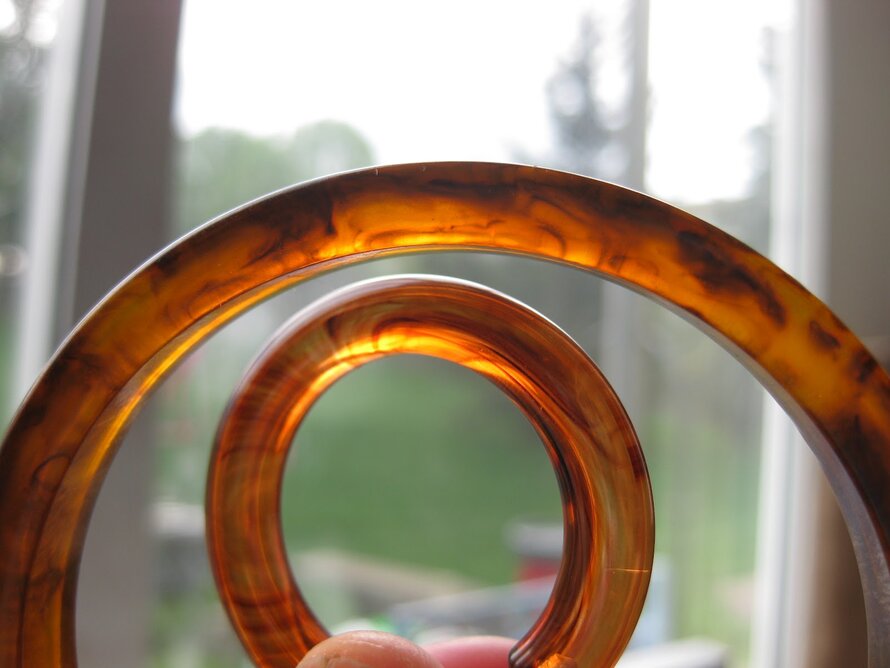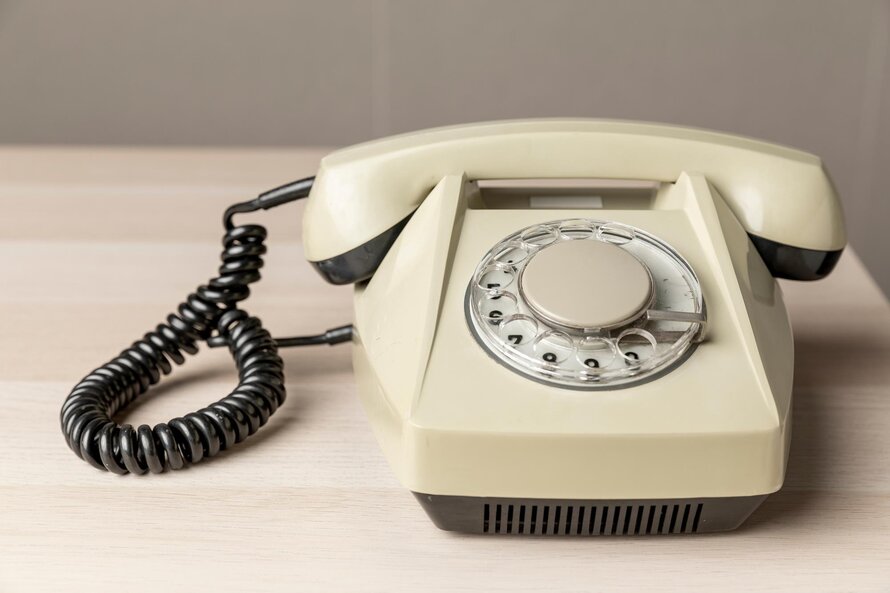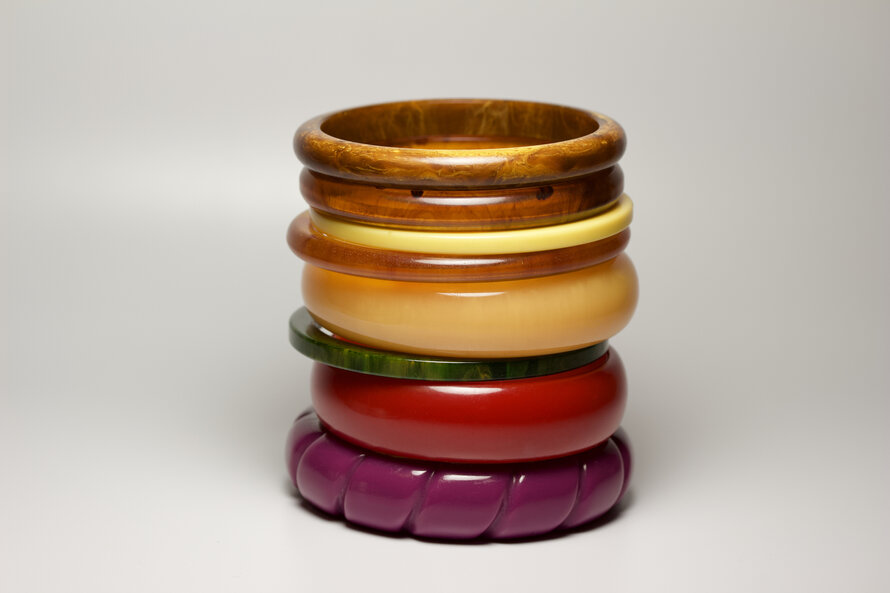At the beginning of the 20th century, a remarkable material appeared and brought about a significant revolution and innovation in the field of manufacturing and design. That is Bakelite plastic - the first synthetic plastic used commercially. With its unique properties and wide application potential, Bakelite quickly became a symbol of modernity, leading to the birth of many other plastic materials. Let's learn about the history, uniqueness, and effects of this type of plastic below!
1. History of bakelite plastic
The history of Bakelite plastic is a tale of innovation and profound impact on both the industry and daily life. Invented in 1907 by Belgian-born American chemist Leo Hendrik Baekeland, Bakelite marked a significant advancement in the realm of synthetic materials.
Let's review this story through the following timelines:
- 1889 - 1899: After immigrating to the United States in 1889, Baekeland made a name for himself with his groundbreaking invention, Velox. This photographic printing paper revolutionized the industry, allowing for development under artificial light. In a moment of great success, Baekeland sold the rights to Velox to George Eastman and Kodak for an astounding one million dollars in 1899.
- 1907: With his entrepreneurial spirit and scientific expertise, Baekeland established his own laboratory in Yonkers, New York. It was there, in 1907, that he made his most significant breakthrough: the creation of Bakelite.
Combining phenol, a commonly used disinfectant, with formaldehyde, Baekeland originally aimed to develop a synthetic alternative to shellac for electronic insulation. However, the material's remarkable strength and moldability, coupled with its cost-effectiveness, quickly positioned it as an ideal substance for manufacturing.
- 1909: At that time, Bakelite was introduced to the public during a chemical conference, sparking immediate interest and enthusiasm. Its versatility led to its incorporation into a wide range of products. Bakelite became the go-to material for telephone handsets, costume jewelry, light bulb bases and sockets, automobile engine parts, and components for washing machines.
This groundbreaking plastic became synonymous with the first synthetic plastic, truly surpassing previous plastics made from natural materials. Thanks to its exceptional electrical insulating properties, Bakelite is quickly replacing materials such as shellac and hard rubber in many industrial and household applications. During the 1920s, Bakelite was widely used to make radio buttons, dials, circuit boards, and even automotive electrical systems.
However, as the plastics market evolved, Bakelite faced competition from alternative materials such as urea formaldehyde and melamine formaldehyde, as well as new thermoplastics such as cellulose acetate and polyvinyl chloride. Going through its initial "dominance period", Bakelite gradually fell out of favor due to problems related to brittleness and color retention.
Read more: Popular methods of processing composite materials
2. Why is bakelite plastic so special?

What makes Bakelite so special?
Bakelite plastic holds a special place in history due to its unique properties. This type of plastic has several important properties that make it stand out from other plastic materials at the moment, and contribute to its widespread use and popularity. Here are some key properties of Bakelite:
- Thermosetting nature: Bakelite exhibits a unique behavior as a thermosetting plastic. When heated, it becomes malleable and can be easily molded into desired shapes. However, upon cooling, it undergoes a chemical reaction that permanently hardens and solidifies the material. This property makes Bakelite highly durable and resistant to deformation.
- Electrical insulation: One of the significant properties of Bakelite is its excellent electrical insulation capabilities. With a low electrical conductivity, Bakelite serves as a reliable insulator, making it suitable for applications requiring electrical insulation and non-conductivity. It helps prevent the flow of electric current, reducing the risk of short circuits and electrical hazards.
- Heat resistance: Bakelite exhibits impressive heat resistance, making it highly suitable for applications where exposure to high temperatures is expected. It is non-flammable and possesses excellent fire-resistant properties. This heat resistance allows Bakelite to withstand elevated temperatures without deforming or losing its structural integrity.
- Chemical resistance: Bakelite is resistant to various destructive solvents and chemicals. It does not readily react or degrade when exposed to acids, bases, oils, or other corrosive substances. This chemical resistance contributes to the long-lasting nature of Bakelite products, making them highly durable and reliable.
- Moldability: Bakelite can be easily and quickly molded into intricate shapes and designs. Its thermosetting nature allows for efficient and precise molding processes, resulting in smooth and detailed moldings. This property makes Bakelite a preferred choice for manufacturing products with complex geometries.
- Scratch resistance: The moldings produced from Bakelite are known for their scratch-resistant properties. The material exhibits surface hardness and toughness, making it resistant to scratches, abrasions, and general wear and tear. This property ensures that Bakelite products maintain their appearance and functionality for extended periods.
- Variety of colors: While Bakelite is commonly associated with its characteristic brown or amber color, it is available in a wide range of colors. Thanks to this property, Bakelite allows for creative and aesthetically pleasing designs in various industries, including fashion, jewelry, and interior decor.
- Distinctive odor: Bakelite has a unique and recognizable odor. This distinctive scent can help identify the presence of Bakelite in vintage items and aids in the authentication process.
In general, at the time Bakelite was born, with these properties, Bakelite synthetic plastic was considered a breakthrough, surpassing current materials, and providing optimal solutions, suitable for many industries. different. And in fact, the widespread applications of Bakelite have proven that influence.
3. Legacy of bakelite
The legacy of Bakelite is one that transcends its role as a pioneering synthetic plastic. Its impact reverberates through history, marking a significant milestone in materials science and shaping the trajectory of modern industry and innovation.
As the first synthetic plastic, Bakelite revolutionized manufacturing and ushered in an era where humanity was no longer solely reliant on natural materials. Advertised as "The material of 1000 uses," Bakelite heralded a new age of possibilities, from medical implants to space shuttles, where synthetic materials became indispensable.

The classic phone is made from Bakelite
Bakelite's unique properties have enabled its widespread adoption across various industries, including:
- Electronics: Bakelite was a crucial material in the early days of the electronic industry, and was used in the production of radios, telephones, switches, and other electrical components. Bakelite's electrical insulating properties were instrumental in the growth and advancement of the electronics industry. It provided a reliable and affordable material for producing electrical components, such as switches, connectors, and insulators. Bakelite helped pave the way for the development of modern electronic devices and facilitated the widespread adoption of electricity in everyday life.
- Automotive industry: Bakelite was used to manufacture distributor caps, coil housings, steering wheels, and other automotive components.
- Consumer goods: It was utilized in telephones, clocks, pens, jewelry boxes, radios, and various household items.
In more recent times, Bakelite has found applications in the following sectors:
- Aerospace industry: That material is suitable for certain aerospace components, particularly in older aircraft and space shuttles.
- Industrial applications: Bakelite is appropriate for industrial products that are exposed to harsh chemicals. It is used in the manufacturing of electrical switches, components, and equipment that require chemical resistance.
- Collectibles: Vintage bakelite items hold value for collectors due to their historical significance and unique aesthetic qualities. These collectibles include jewelry, accessories, etc.

Bakelite, the first modern plastic, is used for bracelets
Bakelite's legacy extends beyond its practical applications. It serves as a reminder of the power of innovation and human ingenuity in overcoming challenges and pushing the boundaries of what is possible.
Although Bakelite itself is not biodegradable, its development and subsequent advancements in plastic technology have influenced environmental awareness and sustainability practices. The challenges posed by plastic waste and the need for more eco-friendly materials have prompted a reevaluation of plastic usage and the development of recyclable and biodegradable alternatives.
In museums and collections worldwide, Bakelite artifacts stand as testaments to its enduring legacy. From household items to industrial components, Bakelite's influence is omnipresent, reminding us of the transformative power of invention and the lasting imprint it leaves on society.
4. About EuroPlas
As the world's leading filler masterbatch manufacturer, EuroPlas takes pride in delivering tailor-made plastic material solutions that elevate our customers' competitiveness in the market. With a commitment to excellence and innovation, we are the trusted choice for all your plastics needs.
At EuroPlas, we offer an extensive range of plastics meticulously crafted using state-of-the-art technological processes, such as engineering plastic compounds, plastic additives, bioplastics, etc. Our products are engineered to meet the highest standards of quality, durability, and efficiency, ensuring optimal performance across various applications and industries.
Whether you're seeking high-quality plastics for industrial, commercial, or personal use, EuroPlas has you covered. Our friendly and dedicated team is always ready to assist you, whether you have inquiries, need guidance, or require personalized recommendations.
Choose EuroPlas and experience the difference! Don't hesitate to contact us today to discover material solutions that can elevate your projects to new heights.